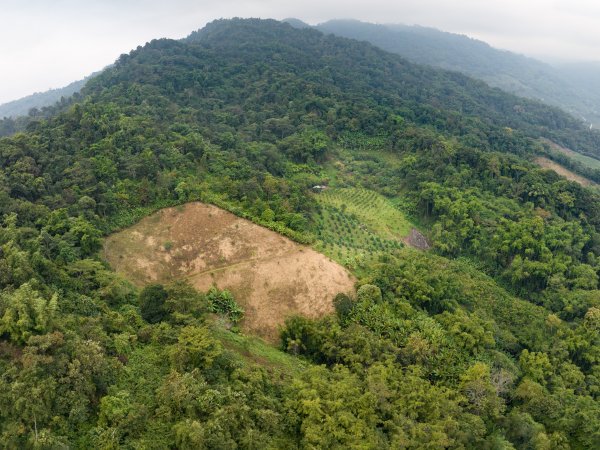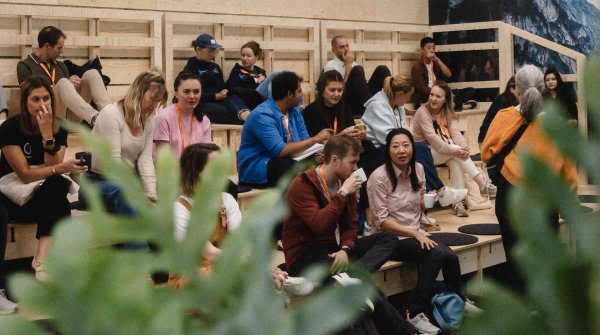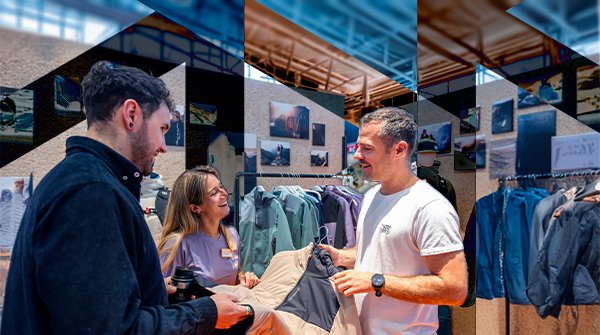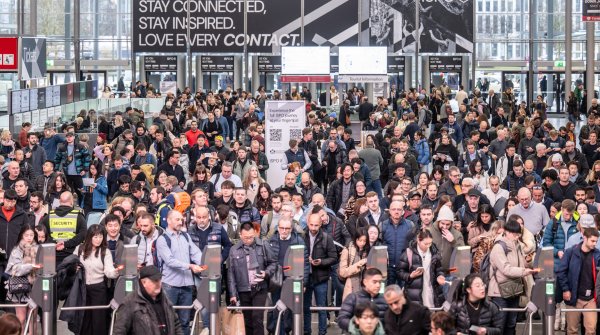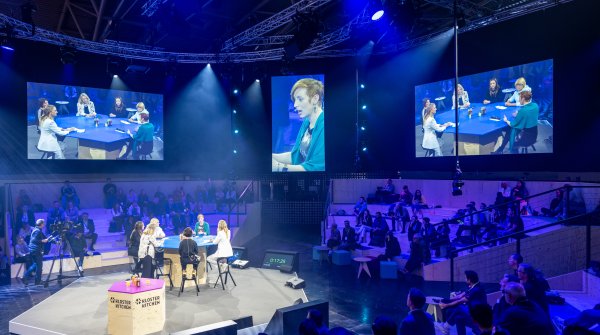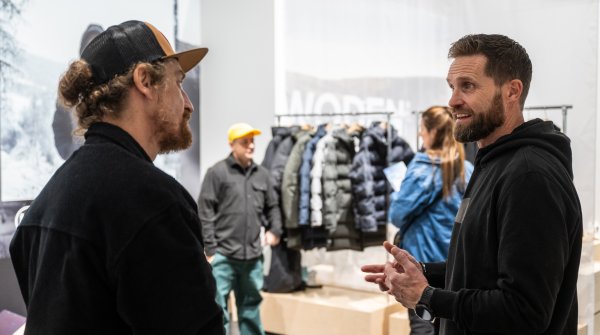Biodiversity refers to all forms of life on Earth. The term combines the prefix "bio" (from the Greek bíos, meaning "life") and the word "diversity." It is measured by taking into account the diversity of ecosystems, species, and genes, both in space and time. It is also about the interactions that exist within and between each of these levels.. Based on what was written in The fashion Pact in 2022: Since 1970, wildlife populations have fallen by an average of 69%. Up to now, according to the European Commission up to 90% of diversity loss is due to resource extraction. Also, the European Parliament Textile production is estimated that the textile industry is responsible for around 20% of global drinking water pollution, due to dyes and other finishing products. Those digits are frightening and that’s the whole industry’s duty to reduce the biodiversity printfoot.

The fashion industry contributes to biodiversity loss through:
- Intensive exploitation of natural resources (cotton, leather, viscose,hydrocarbure based fabrics etc.)
- Deforestation to obtain raw materials
- Soil and water pollution with chemicals and microplastics
- Inadequate management of textile waste, which destroys numerous natural habitats
- Water pollution
Several European regulations and strategies regulate the textile industry from an environmental perspective, some of which explicitly deal with biodiversity. Among them:
- The European Union Deforestation Regulation (EUDR)
- Sustainable Product Ecodesign Regulation (ESPR)
- The European Strategy for Sustainable and Circular Textiles
- Some specifics point of the double materiality in CSRD
The recently implemented EUDR aims to prohibit the importation into the European market of products linked to deforestation or forest degradation. This regulation is explicitly part of the EU's strategy to fight climate change and biodiversity loss. It targets raw materials used in fashion and textiles and plans to extend its scope in future revisions. The list of raw materials are depending on their environmental impact, particularly on biodiversity. The link between deforestation, ecosystem loss, and biodiversity erosion is central to this regulation. And then, Sustainable Product Ecodesign Regulation (ESPR), extends ecodesign requirements to many products, including textiles. By integrating criteria for sustainability, circularity, resource efficiency, and reducing the environmental footprint, it will indirectly concern biodiversity protection, limiting the exploitation of natural resources and pollution.
European Strategy for Sustainable and Circular Textiles has been adopted in March 2022. This strategy is willing to transform the entire textile sector to make it more sustainable, circular, and environmentally friendly by 2030. While the text is asking for reducing the environmental footprint, it is part of the European Green Deal’s dynamic, which includes biodiversity preservation as a cross-cutting objective. The ESRS E4 examines how the company takes into account the two planetary limits linked to these issues: Erosion of biodiversity and the change in land use. The proposed measures cover the entire life cycle of textile products and aim to reduce pressures on ecosystems, including biodiversity.
There are also national initiatives and sectoral consultations happening. At the French level, the National Biodiversity Strategy (NBS) 2030 is part of European and international commitments on biodiversity planned by the European program Life. It has led to working groups specific to the textile sector, which identify levers to reduce pressures on biodiversity. It’s also in charge of coming with sector-specific measures that can be implemented on a large scale. Brands such as Rossignol™, Intersport™ or Lacoste™ participated in the working group. A public concertation about deforestation is organized until May 2025 by the european commission .

The risks and stakes are organized with a three part work approach : Environmental, Health & Economic. According to WWF's Living Planet Report 2024 : “ Over half the SDG targets for 2030 will be missed, with 30% of them stalled or getting worse from the 2015 baseline.” In 2023, the world economic forum estimated $44 trillion of economic value creation is at risk due to biodiversity loss.
For textile and outdoor industry, the metrics which are necessary to collect with traceability are :
1. Land Use and Transformation
- Area of land used for the production of raw materials (cotton, wool, leather, viscose, etc.)
- Rate of deforestation or conversion of natural ecosystems related to suppl
- Indicators of fragmentation or loss of natural habitats caused by exploitation
2. Water Consumption and Pollution
- Volume of water withdrawn for the cultivation and processing of raw materials
- Indicators of water pollution (chemical discharges, nitrogen and phosphorus loads, microplastics released during textile washing)
3. Chemical Pressures and Toxicity
- Quantity and type of chemicals used (pesticides in crops, dyes, finishing agents)
- Emissions of toxic substances into soil and water
4. Greenhouse Gas Emissions
- Direct and indirect CO2e emissions over the entire life cycle, which indirectly impact biodiversity via climate change
5. Raw Materials
- Percentage of raw materials Certified sustainable or sourced from responsible sources
- Geographic origin of raw materials and associated risks to local biodiversity
6. Indicators of impact on species and ecosystems
- Number of endangered species in sourcing areas
- Conservation status of ecosystems exploited or impacted by the supply chain
7. Waste and circularity
- Textile recycling rate and reduction of waste sent to landfill or incineration
- Circularity initiatives (reuse, eco-design, etc.)
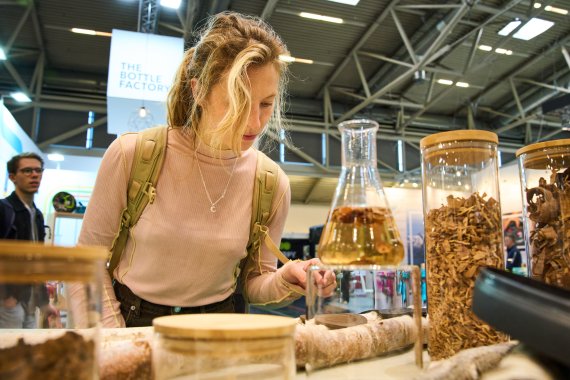
A European program led by Benjamin Billet, president of the European Network of Outdoor Sports (ENOS), aims to strengthen cooperation around climate and biodiversity issues that transcend national borders. This seven-year program, in conjunction with Life Biodiv France, was mainly drawn by the European Network of Outdoor Sports. It was created to encourage the exchange of best practices and the implementation of collective actions to promote sustainable and environmentally friendly sports. Enos is a facilitator in the industry that gathers experts to create a coalition working on improving the relationship between sport and biodiversity.
The European Commission is supporting the Live Biodiv Program, an initiative coordinated by the French Office for Biodiversity (OFB) and funded under the EU LIFE program. Its main goal is to support the implementation of France’s National Biodiversity Strategy (2022–2030) by mobilizing a wide range of stakeholders: local authorities, protected area managers, businesses, NGOs, professional federations and citizens. It runs from 2024 to 2032, with a budget exceeding €50 millions to reverse biodiversity loss caused by unsustainable practices and climate change. It comes to :
- Support local and regional authorities in integrating biodiversity into their policies
- Strengthen the management and effectiveness of protected areas
- Mobilize citizens and raise awareness about biodiversity issues
- Engage economic sectors, especially those with significant biodiversity impacts, to change practices
- Develop training and skills for biodiversity professionals
- Find all the call proposal 2025 FAQ
Some identified work methodologies emerge. For instance, The Science-Based Target Network (SBTN) offers to set science-based targets for two main areas: soils and freshwater. Methodologies for biodiversity and oceans in the food industry have just been published and there are some inspirations to be taken. For soils, the targets focus on reducing the land footprint, halting deforestation and the conversion of natural ecosystems, and restoring and regenerating environments. The SBTN methodology helps identify priority geographic areas based on the type of pressure, the state of nature, and local biodiversity.
Companies are encouraged to take action in five steps:
- Assess pressures
- Interpret and prioritize areas under pressure
- Measure and publish results
- Define corrective actions
- Monitor progress This approach aims to align business strategies with planetary boundaries and to make a concrete contribution to the preservation of nature.
On SBTN’s we can consult some interesting case studies such as Kering™ which has already validated the targets thanks to the Accountability Accelerator opened in 2025.
Also Textile exchange is recommended for a few certifications and labels in addition to the mandatory REACH regulation.
- GOTS
- OCS 100
- Regenerative Organic Certification (ROC)
- Regenagri combined with GOTS or OCS 100
- Circularité Global Recycled Standard (Textile Exchange)
- Recycled Claim Standard
Nature is a full character in outdoor marketing and add’s campaign. Indeed, according to Franck Courchamp, a scientist and researcher in ecology and biodiversity at CNRS (National center for scientific research): Between 620 million and 1.3 billion people are exposed to animal imagery conveyed by sports clubs and brands on social networks. Among them: 35% are potentially threatened with extinction. Professor at Paris-Saclay University, he and Ugo Arbieu are co-directing a project called The Wild League. This initiative explores the close relationship between wildlife iconography and the visual identity of professional sports, illustrating how animals like leopards, lions, and others. The Wild League is an international and innovative research project aimed at building a sustainable, collective and collaborative "Sport and Biodiversity" model.
Therefore, advertising is a way of protecting biodiversity by being more careful about the messages both in substance and in form. Some laws are already managing to reduce greenwashing. So now, for example in France the color green, some vocables or images must not be used on packaging and advertising, except for the brands and products that are strictly traceable with the ability of proofing it. Also if you show an IA image, it is mandatory to be mentioned to avoid sending a message of non-existent perfection in nature.
One is for certain: biodiversity is the very basis of outdoor experiences. Without liveable nature, there are no outdoor activities nor associated businesses. The existing regulations also means to lead the sector responsibility. Hence any company that benefits from nature must actively commit to its preservation - every effort counts. The new EU regulations can be overwhelming. ISPO 2025, as the flagship event in the sports business, offers much-needed guidance. At the Green Stage, industry professionals will deliver practical insights and specific recommendations on implementing regulatory requirements. Discover how your sports business can protect biodiversity, apply sustainable solutions in your marketing, and prepare for the upcoming EU sustainability regulations. Don’t miss the opportunity to engage with experts and lead your company towards a sustainable future. From 30. NOV. – 02. DEC. in Munich, the entire industry will unite to present innovative solutions aimed at making a significant impact on sustainability. Be part of it!
- Biodiversity and the Outdoor Industry: Biodiversity is a critical element of a healthy ecosystem where outdoor sports can thrive. It is related to the entire value chain—from sourcing materials to usage and consumer practices.
Regulations and Guidelines: Various European regulations, such as the EU Deforestation Regulation (EUDR) and the Sustainable Product Ecodesign Regulation (ESPR), urge the industry to take more responsibility regarding biodiversity and resource usage.
Metrics and Risks: The industry must measure environmental impacts—such as land use, water consumption, chemical pressures, and greenhouse gas emissions—to protect biodiversity.
Best Practices: Implementing science-based targets and collaborating within European programs helps promote sustainable practices and improve biodiversity management throughout the sports industry.
Communication and Marketing: The outdoor industry must address the importance of biodiversity in advertising and brand communication to avoid greenwashing and guide public perception.
- ISPO awards
- Mountain sports
- Bike
- Design
- Retail
- Fitness
- Health
- ISPO Job Market
- ISPO Munich
- ISPO Shanghai
- Running
- Brands
- Sustainability
- Olympia
- OutDoor
- Promotion
- Sports Business
- ISPO Textrends
- Triathlon
- Water sports
- Winter sports
- eSports
- SportsTech
- OutDoor by ISPO
- Heroes
- Transformation
- Sport Fashion
- Urban Culture
- Challenges of a CEO
- Trade fairs
- Sports
- Find the Balance
- Product reviews
- Newsletter Exclusive Area
- Magazine
